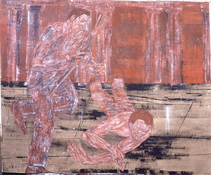David Reynolds
Member
Using a holder the scanner reads the patch and scans with reference to it ( the plane the film lies on above the glass)Look on the back of your negative carrier. There should be a patch of white material (a calibration patch) that the scanner tries to reference.
You could mock up a template with black construction paper with a bit of white tape in the same position, but depending on how the tape reads, it may give you wonky results.
With the older Epson flatbeds, all you have to do is keep the top inch of the scanner glass clear. That's what I do with the 4990 and have no problems.
Using a 'film area guide' keeps the top inch of the scanner glass clear. It allows one to scan any size film flat on the glass
Some people on this forum disagrees with this statement. I agree wholeheartedly and have been scanning both with holders and flat on the glass for many yearsThe Epson software has a setting to scan the negative laying flat on the screen. So the scanner either focuses on the height of the holder or directly on the glass.





